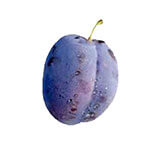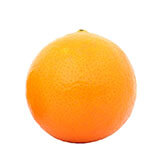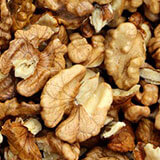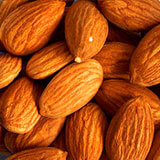Fruits in Serbian
Voće na srpskom
All words for the lovely sweet things, from bananas and pears, to apples and oranges… In this page you’ll find all fruits in Serbian: berries, citrus fruits and nuts with vivid images and native speaker audio files.
But pay attention, we don’t mix apples and oranges in Serbian! Read on to learn this famous idiom in the Serbian language too!
Fruits in Serbian vocabulary – fun facts
Mixing apples and oranges is a common idiom in English, but in Serbian it doesn’t really make sense to say “mešati jabuke i narandže”. What we say has nothing to do with the juicy sweet gifts of the earth. We actually mix grandmas and frogs!
Why so? Probably because they rhyme: “babe i žabe”. Here’s the common phrase: “Ne mešaj babe i žabe” (Don’t mix grandmas and frogs).
What we associate fruits in Serbia with, is actually rakija – fruit brandy typically made in Serbian households from plums, apricots, pears, apples and all kinds of fruits. But first, let’s learn the fruits in Serbian so you can shop in Serbian markets without pointing your finger.
Voće, just like povrće, is a neuter gender collective noun. That means it’s always in singular. If we want to say plural, we’ll have to say “različite vrste voća” (different kinds of fruit).
Most fruits in Serbian are regular feminine gender nouns. But not all! As you learn the words below, can you identify the fruits that are not feminine gender? You’ll find the rule in the bottom of this page!
Voće воће (fruits)

šljiva
plum

jabuka
apple

kajsija
apricot

breskva
peach

kruška
pear

dunja
quince

smokva
fig

lubenica
watermelon

dinja
melon

trešnja
sweet cherry

višnja
sour cherry

grožđe
grapes
by Magdalena Petrovic Jelic
Founder of Serbonika
Serbian language teacher and entrepreneur, language lover and polyglot, but also a mother and a relentless storyteller. Read more about me.
My mission is to create the best method for learning Serbian. Would you like to learn Serbian with my lessons? Try free.
Bobičasto voće бобичасто воће (berries)

borovnica
blueberry

jagoda
strawberry

malina
raspberry

kupina
blackberry
Južno voće јужно воће (southern fruits)

banana
banana

kivi
kiwi

ananas
pineapple

nar
pomegranate
Citrusi цитруси (citrtus fruits)

limun
lemon

grejpfrut
grapefruit

narandža
orange

mandarina
mandarin
Orašasto voće орашасто воће (nuts)

orah
orasi
walnut, walnuts

lešnik
lešnici
hazelnut, hazelnuts

badem
bademi
almond, almonds

kesten
kestenje
chestnut, chestnuts
Fruits in Serbian – grammar facts
All “normal” fruits in Serbian are regular feminine gender nouns, except:
- grožđe (grapes), which is a neuter gender singular collective noun
- orašasto voće (nuts), which are masculine gender nouns
- jućno voće (sothern fruits), which are mostly foreign words. The ones that end in -a are feminine (banana, narandža, mandarina), and the others are masculine (kivi, ananas, nar, limun, grejpfrut).
Test your fruits in Serbian!

This simple quiz will show you how many Serbian fruits you have actually learned.
Learn more of the food vocabulary in Serbian
If you liked this lesson, you’ll also like what we have in the related course. Learn more food vocabulary and example sentences in our Vocabulary course “Hrana”.
Serbonika
Najbolja metoda za učenje srpskog jezika
The best method to learn Serbian
The sooner you start learning, the sooner you’ll start talking. Take action now!
Kuća (House)
How to say house and home in Serbian? Learn all words to describe your house in Serbian language. Native speaker audio files. A fun quiz to test how well you know places around a house.
Moda (fashion)
Fashion vocabulary and Clothes in Serbian: Learn words for different clothes, shoes, accessories and jewelry. Verbs and examples with AUDIO included
Telo (body)
Learn facial features and body parts in Serbian. Listen to audio and practice pronunciation. Fun facts and a QUIZ: Put your knowledge to the test!



